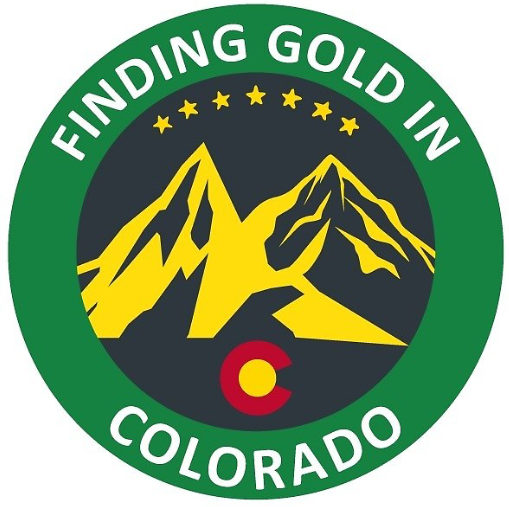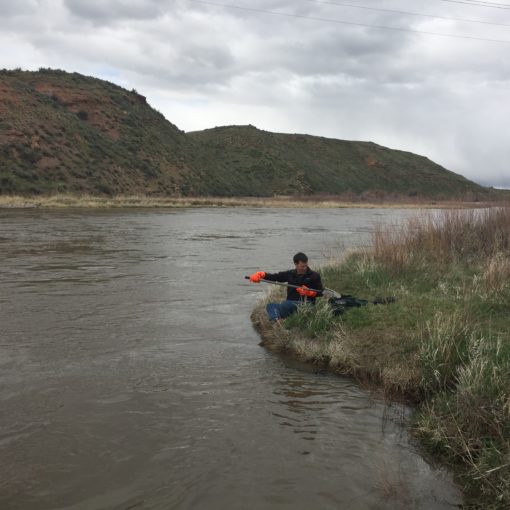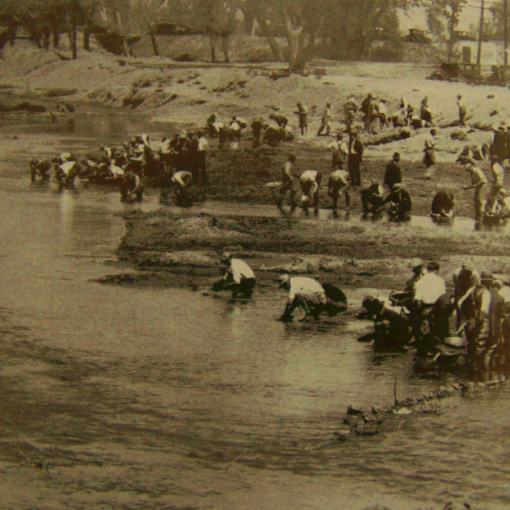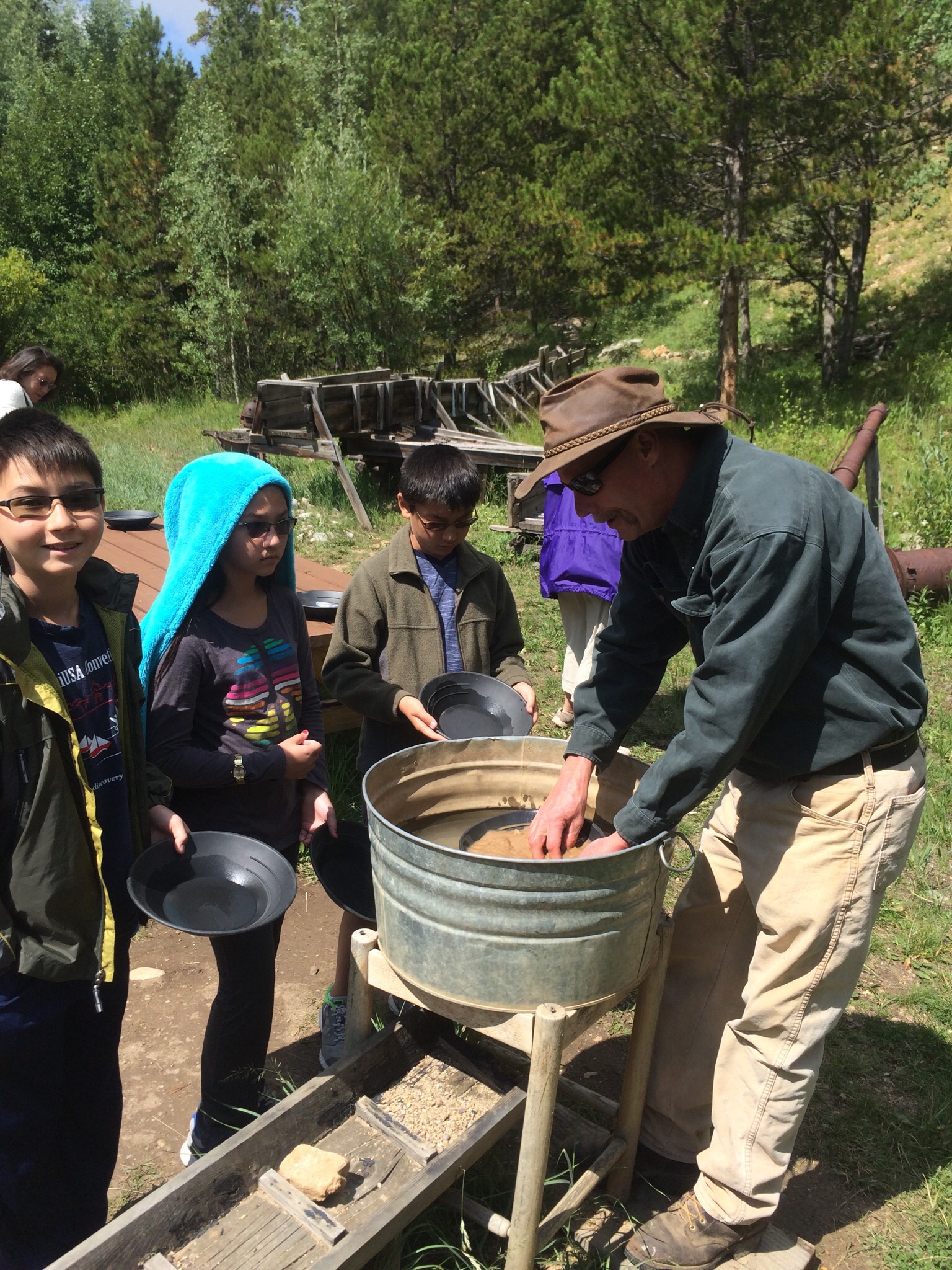Benjamin Stanley Revett was a British-born mining engineer and entrepreneur who made his fortune in the gold-dredging business in Colorado. He was known as the “Gold Dredge King” for his innovative use of dredge boats to scoop up riverbed material in search of gold for the first time in Colorado. He also built a lavish Victorian style mansion near Breckenridge, called Swan’s Nest, as a summer home for his wife and himself.


Revett was born in London in 1865 and graduated from the British Royal School of Mines. He came to the United States in 1889 and worked as a mine engineer in various states, including Montana, Idaho, and California. He arrived in Colorado in 1897 and became interested in the potential of gold-dredging on the Swan River, a tributary of the Blue River. He formed the North American Gold Dredging Company and acquired several patents for his dredge boat designs. His first boats were massive floating machines that could dig up to 40 feet deep and process up to 3,000 cubic yards of gravel per day. They also left behind huge piles of tailings that altered the landscape and ecology of the river valley. Unfortunately, digging 40 feet down wasn’t good enough and so his first dredge boat failed to be profitable. Studying the situation, Revett realized the limitations of steam powered dredges meant he couldn’t make money that way in Colorado. The profitable gold in the Swan River was 60-80 feet down, it was just out of reach of his steam powered machine. For Revett, it was time to reconsider his approach.
Revett’s next dredge boats were the Eleanor 1 and Eleanor 2. These twin sisters were electric powered. The innovation of electrical power meant that the power generation equipment didn’t have to be on the dredge, it could be on shore instead! The two dredges operated next to each other in Clear Creek just east of Golden. They entertained the people of Denver by racing along the creek. Folks brought picnics, made bets on their progress, and watched the giant dredges operate as they raced along the creek bed, digging away! The twins traveled about 6-8 miles east from Golden and then turned around and raced back. Although the twin sister dredges didn’t do a great job of catching the fine gold in Clear Creek, they were considered successful because of how deep they could dig. (Side note: since they failed to catch the gold, Clear Creek still has plenty of gold for us today. I have several other articles about places to dig in Clear Creek through metro Denver here and here and here and here and especially here at Arapahoe Bar where the dredges started and ended their big race.) History doesn’t record which of the sisters won the race, but it doesn’t matter – Revett had succeeded in getting lots of good press and in proving the power of his electric dredge design. Based on that success, he was able to sell one dredge to a company in California. He brought the other up to the Breckenridge area where he renamed it the Reiling Dredge. It, and its successors, made Revett a rich man and provided jobs in Breckenridge for decades to come. You can see the remains of the dredge floating where it was abandoned in French Creek.
He also expanded his operations to other rivers in Colorado, such as the Arkansas River south of Leadville. But his focus was on the Breckenridge area with involvement in seven of the nine dredge boats that operated in Summity County. He became one of the most successful and influential figures in the mining industry, as well as a prominent citizen of Breckenridge. He served as the president of the Breckenridge Chamber of Commerce and the Breckenridge Electric Light Company (no surprise there, right?!). He also donated land and money for various civic projects, such as a hospital, a library, and a park.
In 1898, Revett built Swan’s Nest on a 160-acre property on the Swan River, about four miles north of Breckenridge. The house is a two-story frame structure with a steep-pitched roof, five dormers, a broad veranda, and two wings. It has 17 rooms, including four bedrooms, two bathrooms, a billiard room, a studio kitchen, and originally had quarters for his Japanese gardener and Filipino house servants. It also had extra-wide doors to accommodate Revett’s large stature. He weighed over 300 pounds and stood about six feet tall – quite tall for a man in those days. The house was named after the swans that Revett imported from England and kept on the river. He also planted thousands of trees and flowers on the property, creating a picturesque setting for his summer retreat. The house is still there and over the years was used as a hunting lodge and a boy’s camp. At one point, the mansion sold for just $466 in back taxes. Early this century, it was purchased by a couple, Christy and Randy Rost, who spent a decade restoring and renovating it. In doing so, they converted one room, with foot thick stone walls and a steel reinforced ceiling, into a walk-in pantry. Originally, that little room was Revett’s gold vault! Similarly, the stones for the massive fireplace were gathered from the piles of large river cobbles dug up by his first dredge – lots of great history in this house even now. According to owner Christy Rost, “He was quite the man. He was very flamboyant, and the ladies loved him,” she said. “He and his wife entertained lavishly in this house. We have read about champagne and oysters. They entertained royalty from Europe as well as the high society from the U.S.” (taken from a Denver Post article by Emilie Rusch, Feb 2015). Visitors can appreciate the house from the street, at 379 Revett Drive.
Revett sold his dredge boats in 1909 and moved to Denver with his wife. He continued to be involved in mining ventures until his death in 1919. He was buried in Fairmount Cemetery in north Denver. The big commercial dredges continued to run in the Breckenridge area until 1942 when the last one was shut down right in town because it was no longer profitable. The pond where it slowly sank into the mud is still there, with a reconstructed dredge, which hosts a restaurant, floating in the pond. The remains of that last dredge are deep underwater below the floating restaurant! Check it out at 401 South Main St in Breckenridge.
Want to learn more where to see Revett’s legacy and other Colorado gold mining history? My guidebook Finding Gold in Colorado: Prospector’s Edition tells the stories of all the big Colorado gold rushes, their towns and the people who made it all happen. The book also provides all the details you need to go prospecting in all 18 regions of the state that experienced a gold rush: a total of over 180 public access prospecting sites! If that’s not enough, I wrote another book which adds another 270 prospecting sites across the state. It includes more sites in each of the regions covered in the first book, and also five new chapters covering areas with gold that never had a historical gold rush of any significance. That book is called Finding Gold in Colorado: The Wandering Prospector but you can think of it as Volume 2 of the guidebook series.





